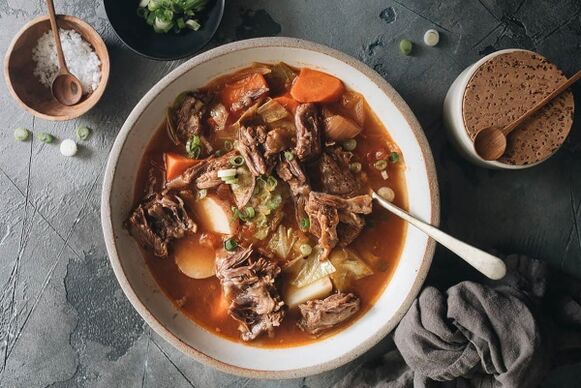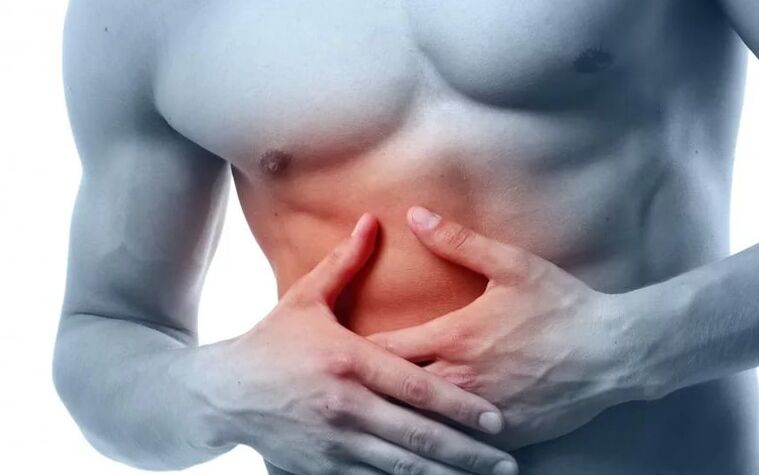
Trypsin, used to digest proteins; lipase, which processes fat; Lactase, maltase, amylase, and sucrase ensure the conversion of complex carbohydrates into simple sugars.
General rules

Daily salt intake should not exceed 6 grams (for any form of pathology).
Why follow the pancreatitis diet?
Products allowed to treat pancreatitis
Vitamin A – 10 mg; B vitamins – 2 to 10 mg; Vitamin C – up to 150 g; Calcium – 0. 8 g; Sodium – 3 g; Phosphorus - 1. 3 grams; Magnesium – 0. 5 g; Iron – 0. 03 g.
vegetable: Potatoes, cucumbers, cauliflower, seaweed, green beans, pumpkin, zucchini, celery, carrots. There is a lot of controversy among nutritionists about beet consumption. Cooked root vegetables are known to be healthy, but their high levels of betaine and sugar raise questions about their safety as a food for pancreatic inflammation. Vegetables are pureed and eaten as part of the first course. Gradually allow transition to coarser grinds. fruits, berries: Apple, pear, pomegranate, peach, strawberry, raspberry. The products are baked (apples), steamed or prepared into various delicious dishes (without sugar): preserves, jams, mousses, marshmallows, marmalades, jellies. Meat (lean meat): Turkey, chicken, rabbit, veal (tenderloin or tenderloin). It can be taken after the patient's condition is stable. They are used to cook broths, soups, steamed steaks, meatballs, meatballs and soufflés. fish: Barracuda, pike, carp, perch, hake, cod, cod, blue cod. Boil into chunks or processed into minced meat for steaming. Dairy products (low fat): Milk, kefir, yogurt, cheese, cream, yogurt. Drink fermented milk drinks little by little during the day, use milk to cook porridge, and use cheese for casseroles and puddings. Also worth mentioning is the cheese. Only pickled soft cheeses are allowed: feta, suluguni, etc. These products are crushed and added to foods during the cooking process. cereals: Semolina, rice, buckwheat, oatmeal. It is most suitable to grind grains into flour. spaghetti: any. Prepare according to instructions, giving priority to small items. Egg: Chicken, quail. They can be eaten cooked (mashed), half-boiled (rarely) or as an omelet. bread: Wheat (yesterday), bran, crackers, biscuits. Oil: Cream (up to 30 g per day), vegetables (flax seeds, olives, refined sunflower) are gradually introduced into the menu. drinks: Light tea, candied fruit, non-acidic berries, diluted fruit juices, mineral water.
Products that are fully or partially restricted
Any alcoholic beverages are strictly prohibited, as well as espresso, carbonated drinks, cocoa and green tea.
Sample menu for a week with pancreatitis
breakfast. It is best to add water to cook soft porridge; if there are no symptoms, you can add diluted milk. You can complement your meal with a piece of buttered toast. Lunch. Typically, it includes unfermented cottage cheese or cheesecake, jellies and purees. dinner. The first course was a light broth and vegetable soup. The second course is meat or fish soufflé, steamed pork chop, cereal purée and vegetables. Afternoon snack. The ingredients are similar to the second snack. dinner. This meal is best light but with adequate protein content. Boiled fish and meat sauce are suitable as side dishes. For the night. Replace food with a cup of low-fat kefir or yogurt.
on Monday
Rice porridge, rosehip infusion. Apples roasted with dried apricots. Chicken consommé with croutons, fish soufflé. Kissel, cookie. Turkey meatballs, pumpkin and carrot puree. Kefir.
Tuesday
Buckwheat porridge and milk tea. Low-fat cottage cheese (100 g), apple mousse. Vegetable puree soup, steamed veal balls. Candied fruit, a soft, slightly salty piece of cheese. Boiled seabass with potatoes. Ryazhenka.
Wednesday
Oatmeal with water and dried fruits. yogurt. Rice soup with carrots, bread with cheese. jam. Cheesy casserole with pears and wheat bread. yogurt.
Thursday
Steamed omelette (white), butter sandwich, tea. Curd Pudding. Fish soup, rabbit soufflé with carrot garnish. Kefir, jelly. Steamed chicken fillet with cauliflower puree. Curdled milk.
Friday
Steamed cheesecake, rosehip drink. Baked apples. Pumpkin cream soup, turkey rolls with vegetables. yogurt. Boiled veal, carrot pudding. Unsweetened tea.
Saturday
Boil egg whites, kefir. Purees, biscuits. Homemade noodles with vegetable soup and turkey steak. cottage cheese. Pasta with green peas, candied fruit. Varenec.
Sunday
Semolina porridge with butter. Apple mousse. Chicken soup with potato dumplings, fish dumplings. Vegetable puree. Steamed turkey with zucchini and carrot side dishes. Milk (low fat).
diet recipes
Pumpkin porridge
Crushed round-grain rice - half cup; Pumpkin – 300 g; Half and half milk and water - only 1 cup; Sugar – 1 teaspoon; Salt.
Meatball Cauliflower Soup
Turkey or chicken fillet – 300 g; Fresh egg whites – 2; Potatoes - 3 pieces; Carrot – 1 piece; Cauliflower – 300 g; Water – 2-2. 5 liters; Salt.
Chicken soufflé
Skinless chicken breast – 500 g; Milk – 1 cup; Egg whites – 2; Vegetable oil (used to lubricate molds); Salt.
Steamed fish fillets
White fish fillets (cod, cod, seabass) – 500 g; egg whites of 2 eggs; Salt.
Broccoli Omelet
Raw egg whites – 4 (or 2 eggs); Broccoli – 200 g; Milk – 0. 5 cups; water; Salt; Oil used for lubrication.
for children
Nutrition in children with pancreatitis is the same as in adults and follows a similar regimen: the first week - a strict, mildest menu, then a gradually diversified weekly table, presupposing good digestibility and the absence of disturbing symptoms.
For pregnant women
The advantages and disadvantages of
Nutritionist comments
Comments and results
Only by strictly adhering to the rules of the treatment table can stable positive remission dynamics be observed.

















































































